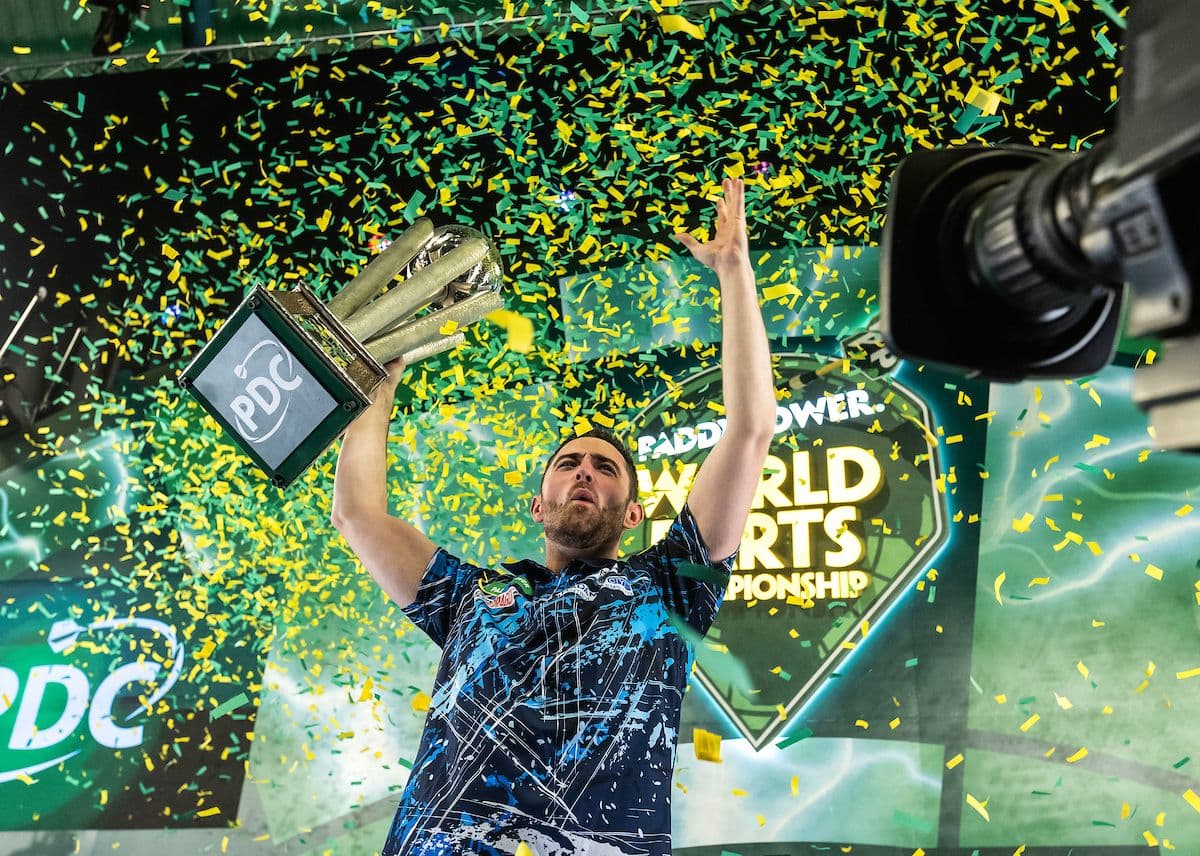Darts
How Does Darts Scoring Work? Legs and Sets Explained
Exploring set and match play formats in darts, from PDC Championships to Unique Tournament Rules. Leg by leg, the drama unfolds.

Darts, a game of precision and strategy, unfolds on a board divided into numbered segments. In the realm of professional darts, each contest begins with players standing shoulder-to-shoulder, armed with a common goal: to reduce their score from 501 to zero. But the journey to victory is laden with rules and tactics, shaping the dynamic of every match.
What Formats are there in Darts? Set and Match play Explained!
At the heart of darts lies the concept of legs, the building blocks of competition. A leg commences with both players boasting a total of 501 points. With each turn, they wield three darts, aiming to subtract their accumulated score from this initial figure.
The ultimate aim? To reach exactly 501 points while concluding the leg with a decisive shot at a double or the bullseye. This pivotal moment, known as a 'checkout,' seals the fate of the leg.
Yet, amidst the pursuit of perfection, lies the spectre of "bust." Should a player exceed the 501-point threshold during a leg, their turn is abruptly halted, and they revert to their score at the outset of their visit, facing the consequences of their miscalculation.
Beyond the realm of individual legs, darts embraces two distinct formats: match play and set play. In match play, victory hinges on achieving a predetermined number of legs, serving as the cornerstone of triumph.
Conversely, set play introduces a layered dynamic, requiring players to secure a specified number of sets, each comprising a set number of legs. Within this framework, the path to victory becomes a strategic chess match, with each set serving as a pivotal battleground in the pursuit of darts supremacy.
How Many Legs are in a Set of Darts?
A set in darts embodies a series of tightly contested legs, each contributing to the narrative of the match. The conclusion of a set is dictated by predefined criteria, typically the attainment of a specific number of legs won by a player.
Within the confines of a set, the advantage of throwing first holds sway, prompting players to alternate this privilege with each new leg. This strategic dance adds a layer of complexity to the proceedings, as competitors seek to capitalise on every opportunity presented.
Traditionally, a set encompasses the best of five legs, a format favoured in illustrious tournaments like the PDC World Darts Championship. However, exceptions to this norm exist, notably in prestigious events such as the World Masters, where a set unfolds as the best of three legs, requiring a player to secure victory in two out of three legs to claim the set. This variation introduces a compressed intensity, heightening the stakes with each throw and underscoring the versatility of darts as a sport.

Image credit: PDC
What are Legs and Sets as the World Darts Championship?
In the esteemed arena of the PDC World Darts Championship, sets unfold as a test of skill and endurance, where players vie to emerge triumphant over a best-of-five legs contest. To claim victory in a set, a player must secure three legs, navigating the ebbs and flows of the match with precision and resolve.
However, should the contest extend to a deciding set, a special rule comes into play, adding an extra layer of tension and intrigue to the proceedings.
As the tournament progresses, the stakes heighten, with match lengths escalating in tandem. This escalating intensity was reflected in the format for the recent 2023/24 Championship, where each round demands a greater display of prowess:
- First Round: Best of five sets
- Second Round: Best of five sets
- Third Round: Best of seven sets
- Fourth Round: Best of seven sets
- Quarter-Finals: Best of nine sets
- Semi-Finals: Best of 11 sets
- Final: Best of 13 sets
In the crucible of competition, the privilege of throwing first in a leg is not taken for granted. Players alternate this honour, ensuring fairness and parity throughout the match. This practice extends to the commencement of each new set, where players take turns to determine the crucial opening leg, setting the stage for the battle that lies ahead.
An Example of Sets Used at the World Darts Championship
In a moment etched into the annals of darts history, the 2007 PDC World Darts Championship final witnessed Raymond van Barneveld and Phil Taylor locked in a gripping battle for supremacy. Ultimately, van Barneveld emerged victorious, triumphing over Taylor with a narrow margin of seven sets to six, in what stands as one of the most electrifying matches ever witnessed in the sport.
The encounter unfolded with Taylor seizing an early advantage, clinching the first two sets with convincing three-leg victories. Undeterred, van Barneveld rallied, claiming the third set before mounting a spirited comeback to secure the subsequent two sets. The seesaw nature of the match persisted, as both players traded blows, each refusing to yield an inch.
As the tension reached its zenith, the match reached a deadlock, with the score line deadlocked at six sets apiece. In a testament to the intensity of the contest, neither contender could establish a decisive two-leg advantage in the final set, triggering a thrilling tiebreak scenario. With the outcome hanging in the balance, the fate of the match hinged on a single leg.
Before the climactic leg, a moment of anticipation enveloped the arena as the players took aim at the bullseye, vying for the coveted advantage of throwing first. This pivotal toss of the dart would shape the trajectory of the final leg, amplifying the stakes and heightening the drama to unprecedented levels. Ultimately, van Barneveld's unwavering resolve propelled him to victory, etching his name into the pantheon of darts legends, as he won the final seven sets to Taylor’s six (7-6).

Image credit: PDC
Other Tournaments that use Set play
In recent times, a shift has been observed in the landscape of darts tournaments, with an increasing number opting for the match play format over the traditional set-based scoring method. Events like the UK Open and the Grand Slam of Darts have embraced this trend, favouring the best-of-x legs format to determine match outcomes.
Currently, only two active tournaments within the PDC adhere to set play: the renowned World Darts Championship and the esteemed World Grand Prix. Each of these tournaments offers a unique twist to the gameplay experience.
The World Grand Prix stands out for its distinctive rule requiring players to both start and conclude each leg by hitting a double, including the elusive bullseye. This rule adds an additional layer of challenge and strategy to the competition, setting it apart from other televised events in the darts calendar.
Keep your finger on the pulse of all things darts by staying connected with SportsBoom.com.
Access exclusive guides, reports, and interviews to stay up to date with the latest in the
world of darts.
Recommended Articles

Meet Louis Hobbs, our esteemed authority on all matters sports-related. With a wealth of knowledge and experience, Louis effortlessly emerges as our go-to expert. His particular expertise in the realms of darts and snooker sets him apart and brings a level of insight that goes beyond the ordinary. Louis also holds a deep affection for all things related to US sports, with a special emphasis on basketball and American football, which stand out as his particular favorites. His content may not resonate with you, if you don't consider Lamar Jackson the most skilled player in the NFL.


